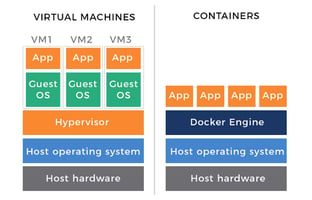How Virtualization Led to Container and Serverless Technology
Tame the Excitement of Containers: Introducing Red Hat OpenShift Container Platform
Automating the Process of Container-Based Application Development
Containers have brought a lot of excitement to IT—they bring both constituents working in IT departments, developers and operations, value by establishing predictability between building and running applications. Developers can trust that their application will perform the same when it’s run as it did when it was built, while operations and admins have the tools to operate and maintain applications seamlessly.
By bringing automation to the table with a platform like Red Hat OpenShift, docker and Kubernetes are delivered to the enterprise with ease, enabling the ability to develop, deploy, and manage containers. Think of moving into a new, furnished house, equipped with all the creature comforts you’ll need. OpenShift is a similar concept, except with running containers at scale, all ready to use and build upon, allowing applications to be wired together to work in concert within complex environments.
What does Red Hat OpenShift deliver?
- Self-service provisioning
- Polyglot, multiple language support
- Automation across application builds, deployments, and scaling
- Container orchestration with Kubernetes
- Persistent storage for stateless and stateful apps
- Built-in operational management
Using OpenShift, you can automate across the aspects of application development lifecycle, including the building process behind containers-based apps, as well as provisioning resources; developers can focus more on writing code and less on building the infrastructure it will run on, ultimately accelerating the development process.
If there are problems and particular components die, automated self-healing kicks in, which is a major benefit to IT operators and admins.
“OpenShift automates all the tasks of developing container-based applications, and automates the processes necessary to run them on a large scale.”
-Sompop Noiwan, Business Development Programs, Emerging Technologies at Red Hat
Developers versus IT: Resolving Joint Challenges
When it comes down to it, developers usually have to put in requests for the infrastructure they need to build their work, whether it’s VMs, servers, app servers, or software, and it’s not a fast process. In the age of DevOps, this kind of productivity loss is costly. Further, they need environments they can experiment with and build on, and waiting restricts flexibility in building better code. Then there’s IT operators and admins, who have to receive and respond to requests, which takes their attention away from technology projects that are impacting business, rather than issuing approvals and provisioning resources.
Here’s how OpenShift eliminates those issues:
- OpenShift provides the ability to carry out self-service as to how infrastructure can be provisioned, eliminating the need for developers to put in requests.
- In many cases, much of the development process in building apps isn’t automated in how infrastructure is provisioned, how code can get checked into a repository, how apps are tested, or how code can be fixed if they fail, and promoted across environments. OpenShift offers total automation for the manual tasks related to provisioning and configuring, ultimately increasing the efficiency of developers.
- When it comes to IT, they’re responsible for infrastructure provisioning, and it’s not easy for them, either. When developers are given self-service capabilities and IT has ability to automate provisioning features based on policies for security, consistency, and consumption, etc., they’re free from low-level administrative tasks that takes away from more impactful work.
- It’s also challenging for IT operators to provide a consistent platform, tools, and infrastructure for developers, because in their experimentation process, developers usually diverge on multiple paths across languages, frameworks, and configuration. OpenShift, however, can support many languages, frameworks, and platforms.
- Finally, making sure there’s consistency every time apps are deployed, in spite of disparate platforms, is critical, but difficult. In using multiple environments, configuration drift sometimes occurs, making it challenging to guarantee predictability and consistency. Operators can use OpenShift to manage and centralize the configuration and delivery of environments, reducing the pain of parsing through configuration drift across platforms.
A Few Best Practices for OpenShift Users
If you’re embarking on a journey of container-based apps, make sure you keep the following principles in mind.
When evaluating containers, or containers at scale, start with small sample projects and grow from there. Running containers at scale involves a lot accompanying complexities that you might not be prepared to address right from the outset. Begin with small experimental projects, and when you look at expanding, go with a platform that’s been designed to address containers at scale, and has been built from the ground up to be able to meet those needs.
Also, don’t try to build a platform using a do-it-yourself approach by assembling a bunch of open source projects—you will regret it. Once you’re done with experimentation, deploy your first proof of concept on a trusted platform that will meet your security, governance, and management needs. The do-it-yourself approach is great for experimentation and getting your feet wet, but it will not work for enterprise distribution.
Adopting the Red Hat OpenShift Container Platform
Want to know more about how Red Hat OpenShift can revolutionize your container-based application development process? We’ve got lots to share with you. If you need feedback on how to operationalize containers at scale for your development and IT teams, contact August Schell now, or call us at (301)-838-9470.


